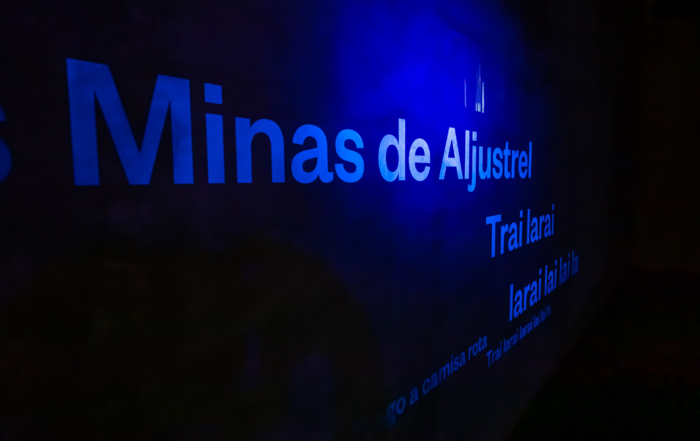An Archaeological Journey into Lisbon’s Past
Sector
Tourism & Culture
Client
Fundação Millennium BCP
Location
Lisbon
Year
2021
Exhibition Design
Atelier BRÜCKNER
Awards
InAVation Award 2023
‘Smart Building’
In the middle of the Lisbon’s center, not far from the Arco da Rua Augusta, we can find NARC – Núcleo Arqueológico da Rua dos Correeiros – an archaeological journey into Lisbon’s past.
EDIGMA was challenged to implement and to be responsible for the coordination of the project, designed by the BRUCKNER Atelier, that consists in giving a new concept, and character to the space. The 450-square-metre exhibition is located in a vault underneath the city and conveys Lisbon’s different layers of time. Visitors discover archaeological remains from the Iberian-Punic, Roman, Visigothic, Islamic, Medieval and Pombaline periods.
The Prologue
The intro on the ground floor of the building offers an overview of the eras that shaped Lisbon, combined with a chronological preview of the objects in the exhibition. From the prologue room, visitors descend into the past and follow a footbridge that opens up the excavation field. You will experience the excavation site as part of a guided tour.


Digital Communication
The prologue media screen allows the guides to give an introduction to the visitors to all the layers of history that the exhibition displays. With their controller they can shuffle between layers of historical infographic illustrative and textual content that appears on a showcase screen and that interacts also with the display artefacts.
The application developed specifically for the NARC project allows guides and specialists to control through tablets the flow of information, videos, animations, sound and lighting, according to the pace of the visit and the profile of visitors.


Immersive Experience
Additional information is provided by animated illustrations on the black glass walls that enclose the room. The blue and white glowing filigree lines stand out in the dark and contribute to the special character of the room. The excavation is transformed into a staged setting. The re-contextualization of the finds conveys their original meaning.
The epilogue projection is a closing projection on the wall above the archaeological ruins from the roman and post earthquake period in Lisbon. It serves as a general run-through of the full experience, an homage to the archaeologists who worked on the site, a link to all the other archaeological sites around Lisbon, and finally an outlook to the future.
The Marquis of Pombal
The Marquis of Pombal had the city center rebuilt and gave it a future-oriented character. The Pombalino architectural style is named after him, a symmetrical city map with buildings made of earthquake-proof wooden structures. The Pombalino media unit consists of an animation explaining the Pombalino architecture, its history, its structure and components, as well as its benefits and wide-spread across Lisbon.


Roman Industry of Fish Preservation
The Roman Industry of Fish Preservation media unit consists of an animation explaining the process of production of the garum sauce that we employed in the roman period at the Narc archeological site.
The Roman Fish Factory area is almost like an individual enclosed space. For that reason, once the guide activates the sound in the space, a surround sound would play simulating marine and sea sounds to give the impression for the visitors that they have been transported to the port where the amphorae are transported across the Mediterranean.







